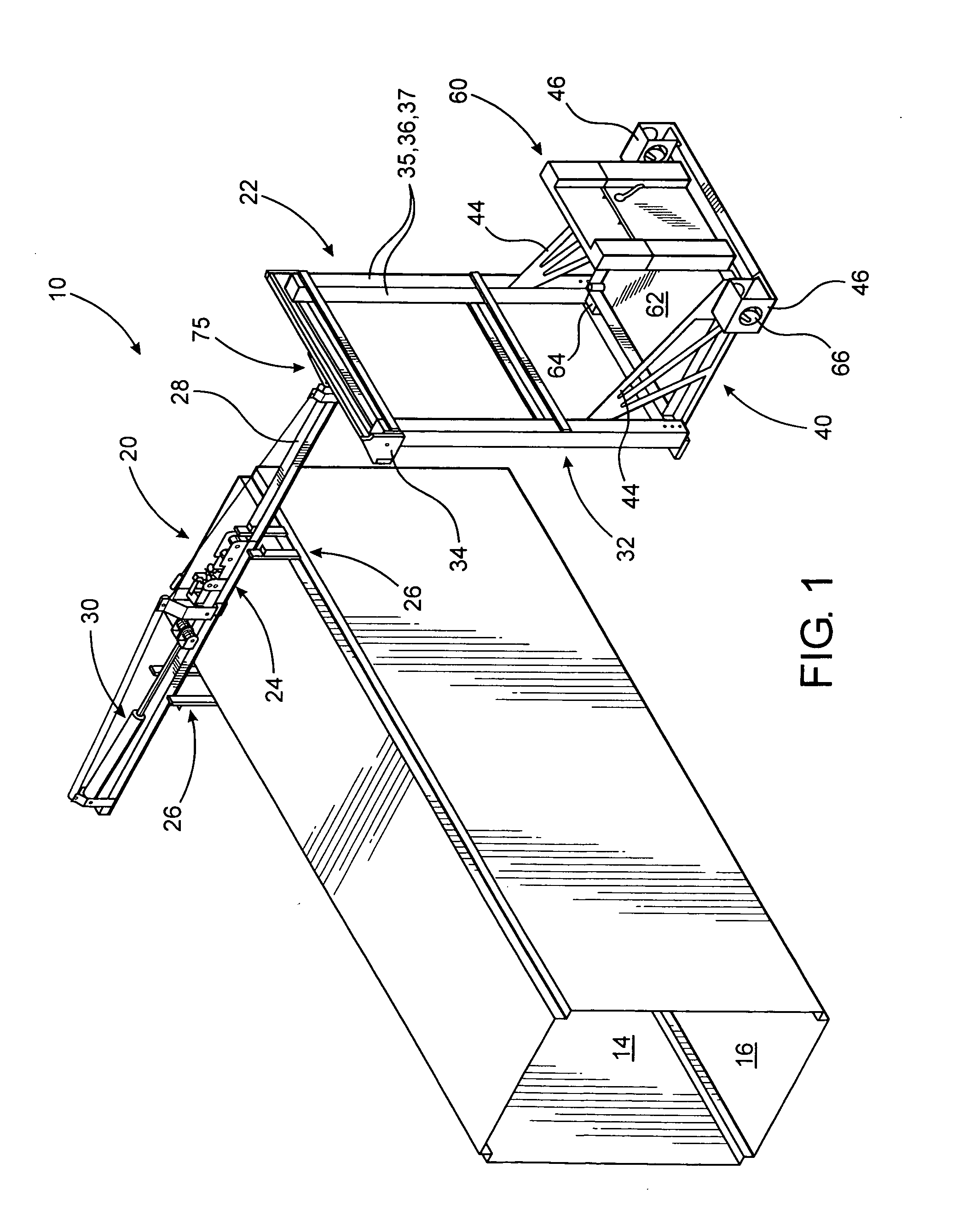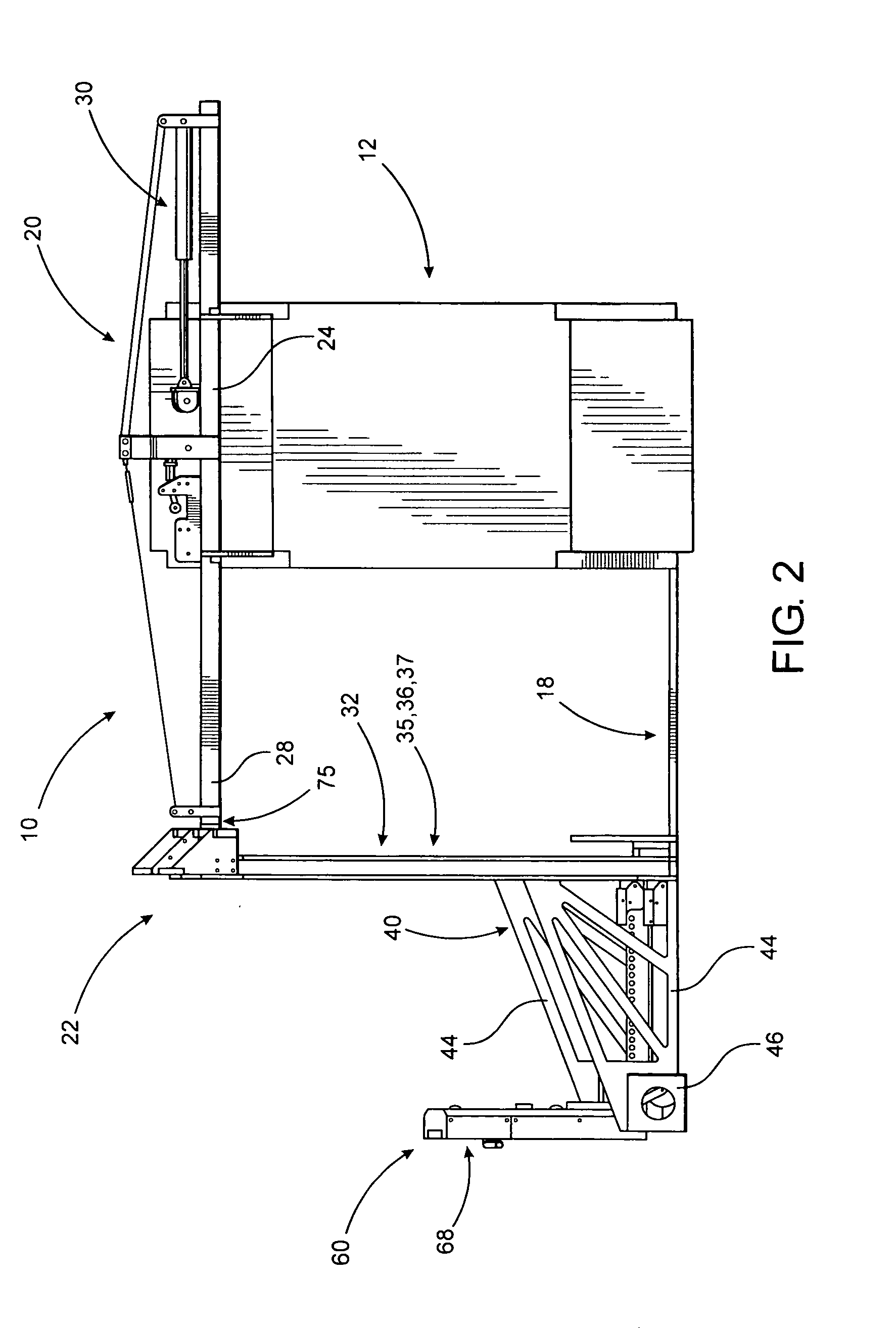Cargo transfer assembly associated with a passenger boarding bridge
a passenger boarding bridge and cargo technology, applied in the direction of bridges, lifting devices, constructions, etc., can solve the problems of increasing the difficulty of passengers boarding the transfer of cargo between the airport boarding bridge and the ramp level or ground surface is recognized as an ever increasing problem, and the cargo handling facilities and procedures are subject to additional and more severe scrutiny. , to achieve the effect of enhancing the versatility of the transfer, ensuring safety and stability of passengers, and facilitating and rapid
- Summary
- Abstract
- Description
- Claims
- Application Information
AI Technical Summary
Benefits of technology
Problems solved by technology
Method used
Image
Examples
Embodiment Construction
[0031]As shown in the accompanying drawings, the present invention is directed to a transfer assembly, generally indicated as 10 of the type specifically structured and operative to transfer a variety of cargo to and from a passenger boarding bridge generally indicated as 12. As represented, the passenger boarding bridge 12 is of the type utilized at airports and disposed in interconnecting relation between various gates of the terminal building or other departure areas and the aircraft, prior to its departure or upon its arrival. Moreover, the passenger boarding bridge 12 includes a hollow interior 14 having a ramp or walkway area as at 16.
[0032]As at least partially demonstrated in FIGS. 5 and 6 an extended portion of at least the ramp 16 is normally oriented at an at least partial incline as it extends from the terminal or departure area to the aircraft. Moreover, the passenger boarding bridge 12 normally includes or is otherwise associated with a level access area generally indi...
PUM
 Login to View More
Login to View More Abstract
Description
Claims
Application Information
 Login to View More
Login to View More - R&D Engineer
- R&D Manager
- IP Professional
- Industry Leading Data Capabilities
- Powerful AI technology
- Patent DNA Extraction
Browse by: Latest US Patents, China's latest patents, Technical Efficacy Thesaurus, Application Domain, Technology Topic, Popular Technical Reports.
© 2024 PatSnap. All rights reserved.Legal|Privacy policy|Modern Slavery Act Transparency Statement|Sitemap|About US| Contact US: help@patsnap.com










